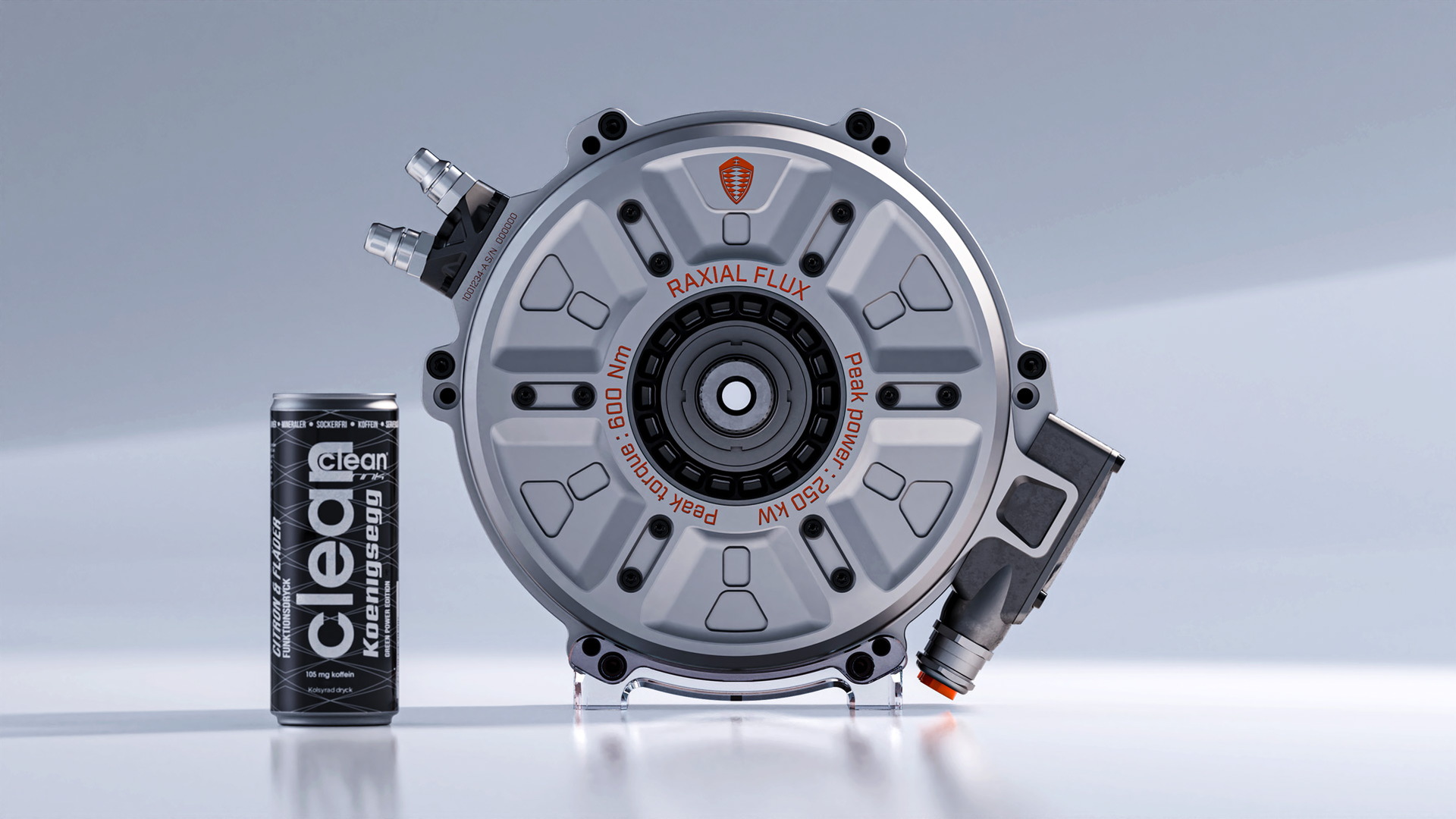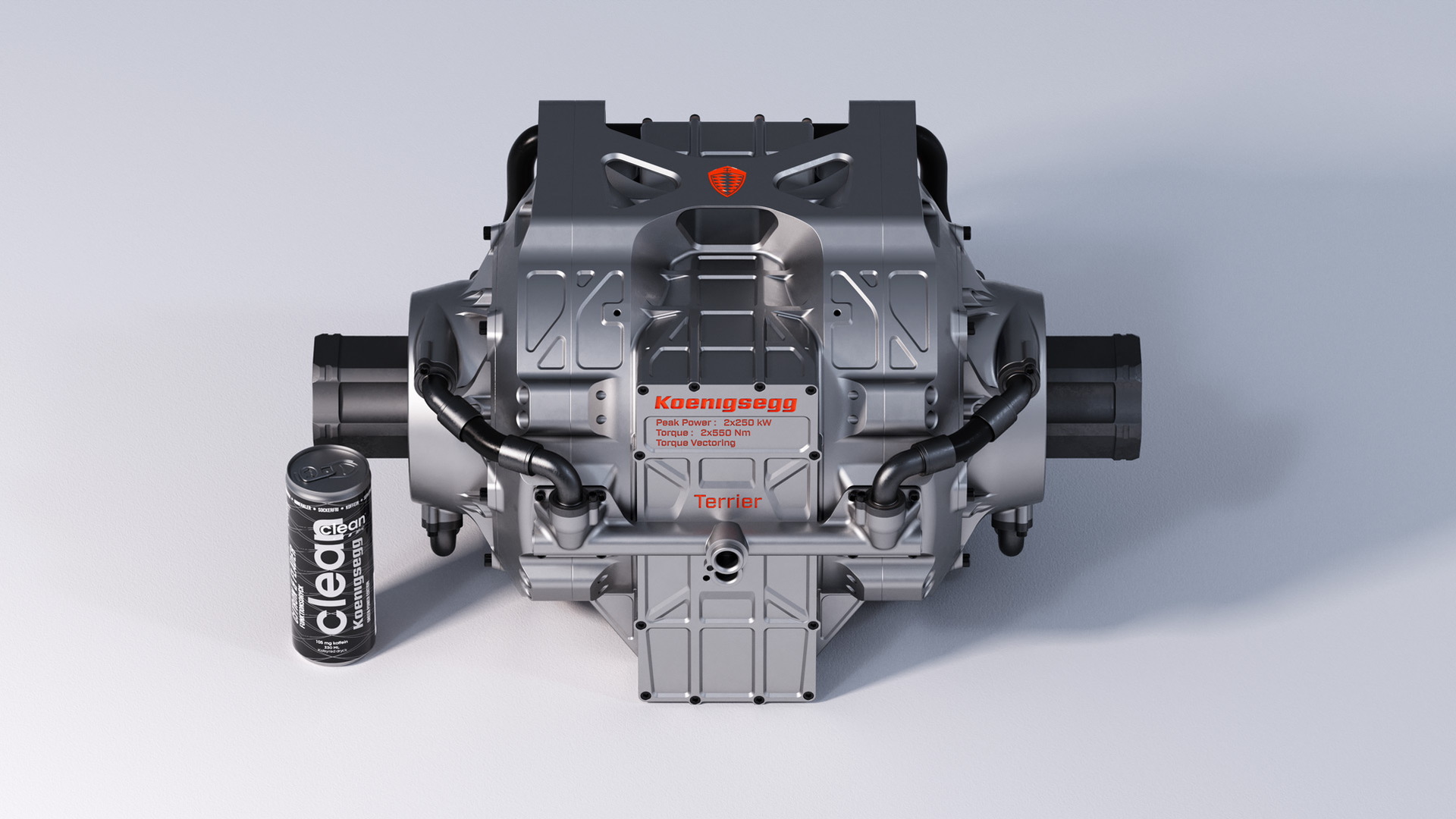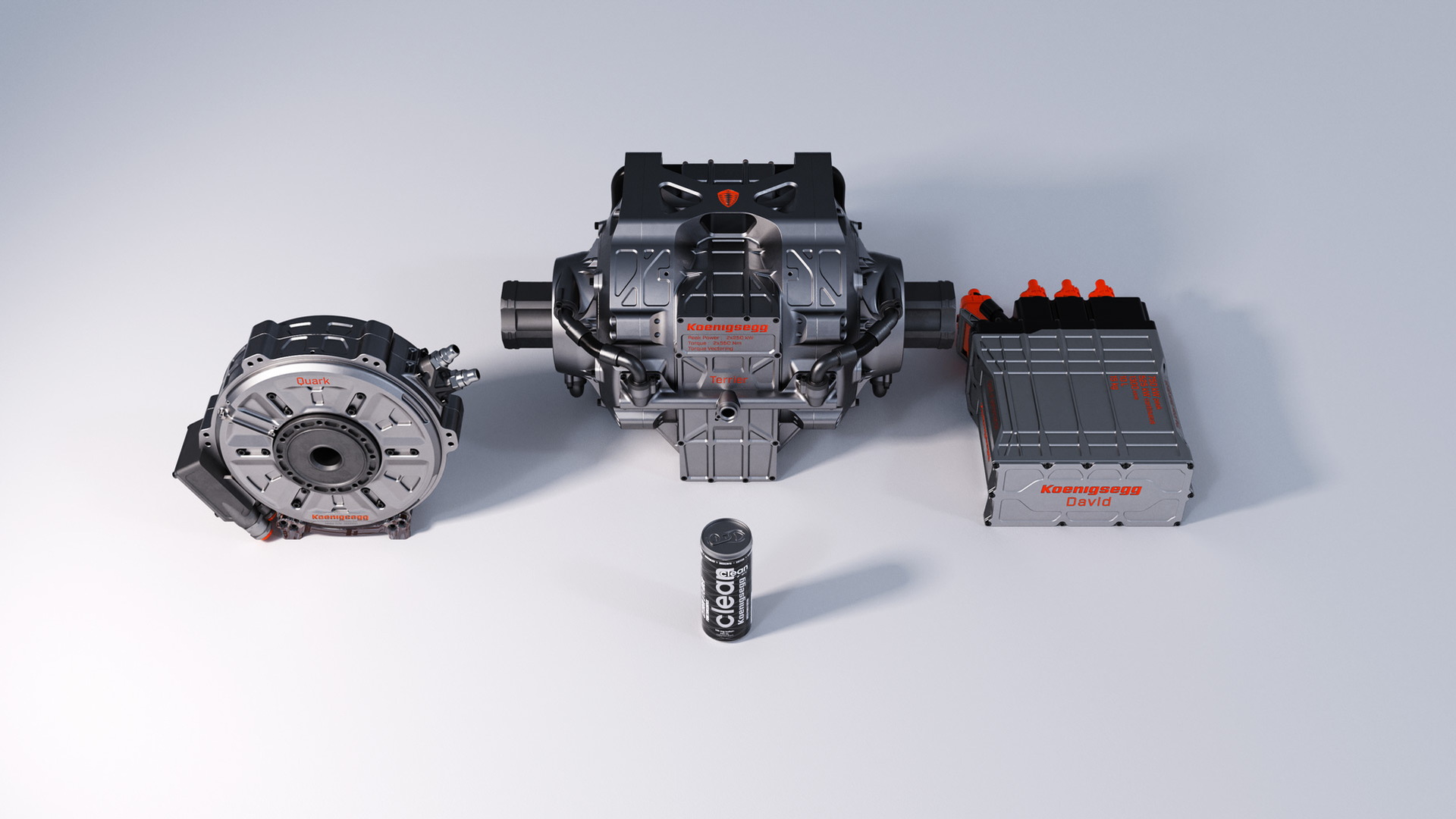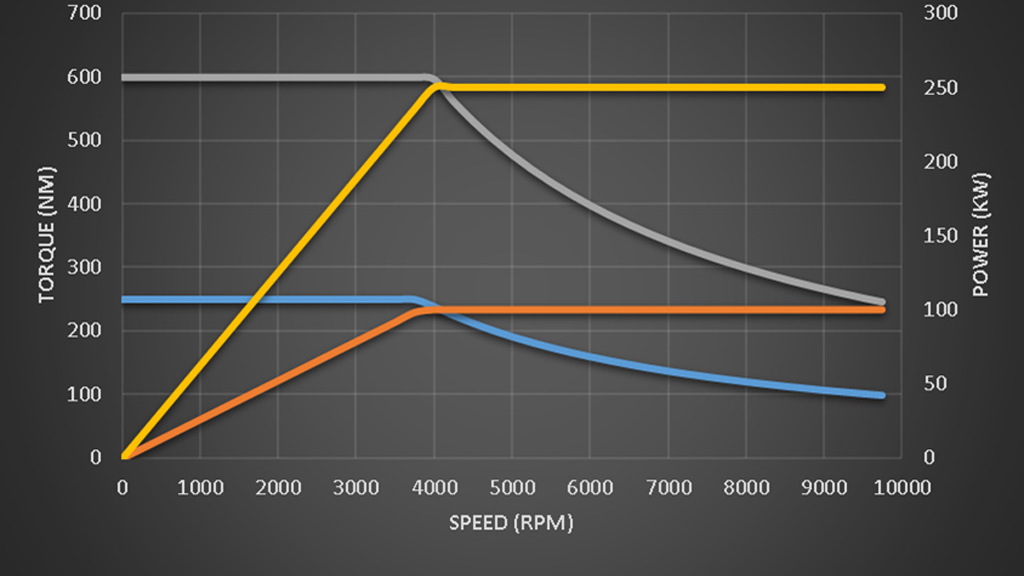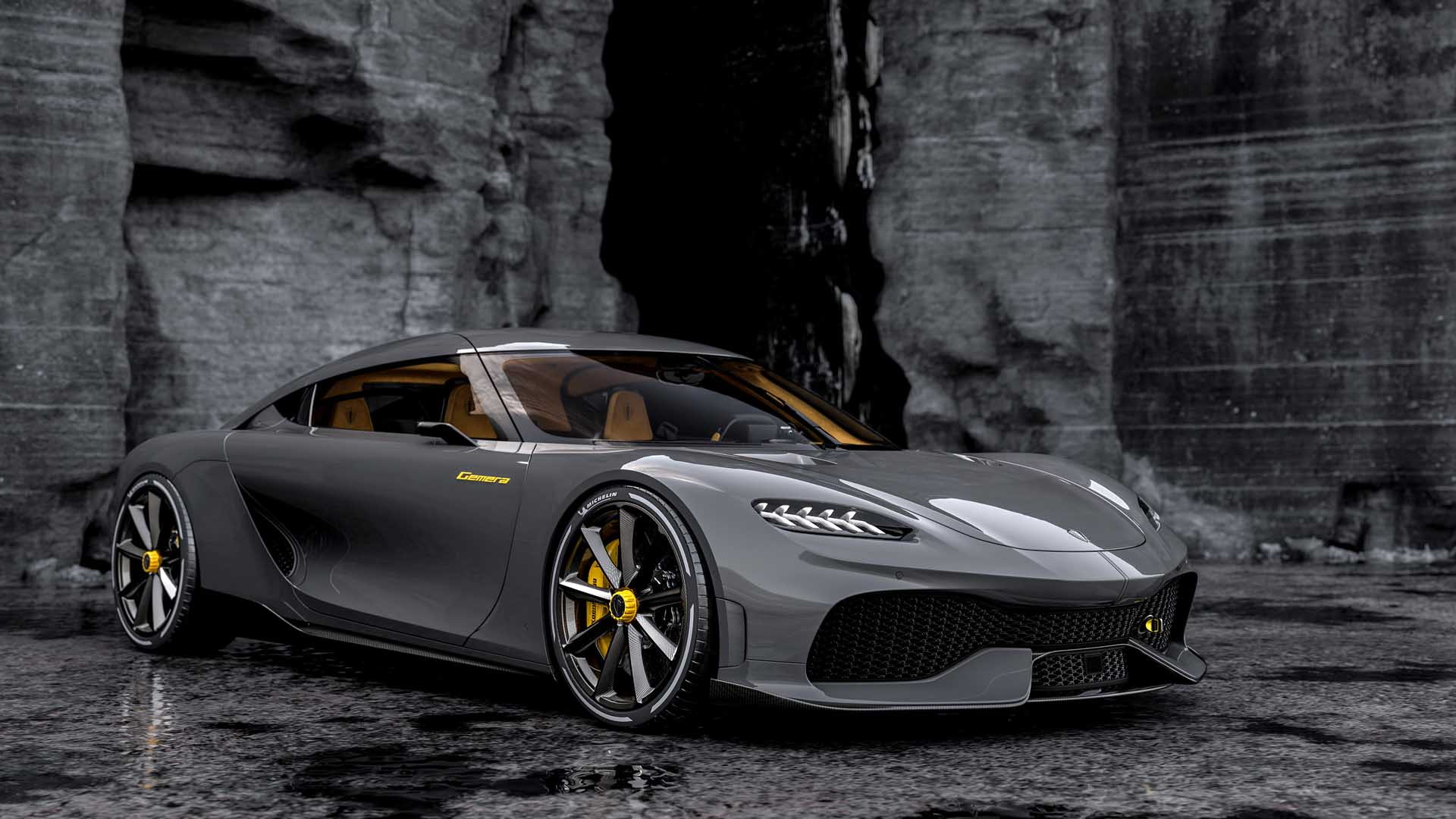Koenigsegg on Monday unveiled state-of-the-art electric powertrain components that it plans to use in its future lineup, as well as license to other companies.
The components include an electric motor called Quark, and an inverter called David. The inverter is the device that turns DC current from the battery into AC current, which electric motors use, and also controls the speed at which the motor spins.
Koenigsegg also unveiled an electric drive unit called Terrier, which combines two Quark electric motors and a David inverter. According to Koenigsegg, the Terrier drive unit is one of the most power and torque design drive units developed for electric vehicles. Get it? Small and feisty like the dog breed it's named after.
To signal how small the components are, Koenigsegg has shown them together with a soda can.

Koenigsegg Quark electric motor torque curve
The Quark electric motor weighs 63 pounds and develops up to 335 hp and 486 lb-ft of torque. Aerospace-spec steel and direct cooling helps to keep the size small, while carbon-fiber parts, made using the same processes that Koenigsegg uses for its carbon wheels, help to keep the weight down.
Koenigsegg also describes the motor as featuring a balance between radial (good for power density) and axial (good for torque density) flux designs, something the company has dubbed Raxial Flux. The result is that it doesn't need a step-down transmission like many rival small, high-revving motors, or at most only a small transmission, helping to improve efficiency while also saving weight and complexity.
Among the first applications for the Quark is Koenigsegg's Gemera hypercar, which will feature three of the motors in combination with a downsized internal-combustion engine for a total 1,700 hp. According to the motor's lead designer, Dragos-Mihai Postariu, the motors will help the Gemera deliver “brutal” acceleration at low speeds, and will then work with the internal-combustion engine to help deliver a continuous record-speed push to 400 kph [248 mph] without any torque or power losses.”
Koenigsegg also imagines the components being applicable in the marine and aviation industries.
